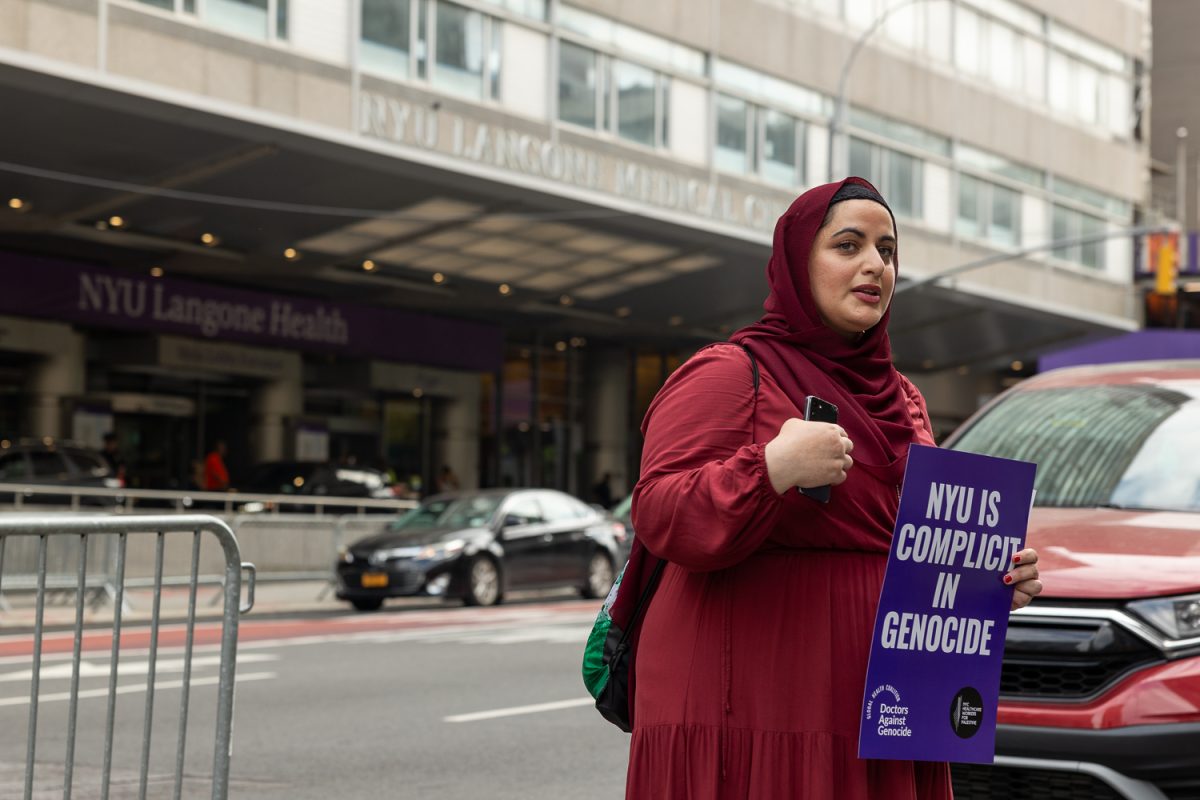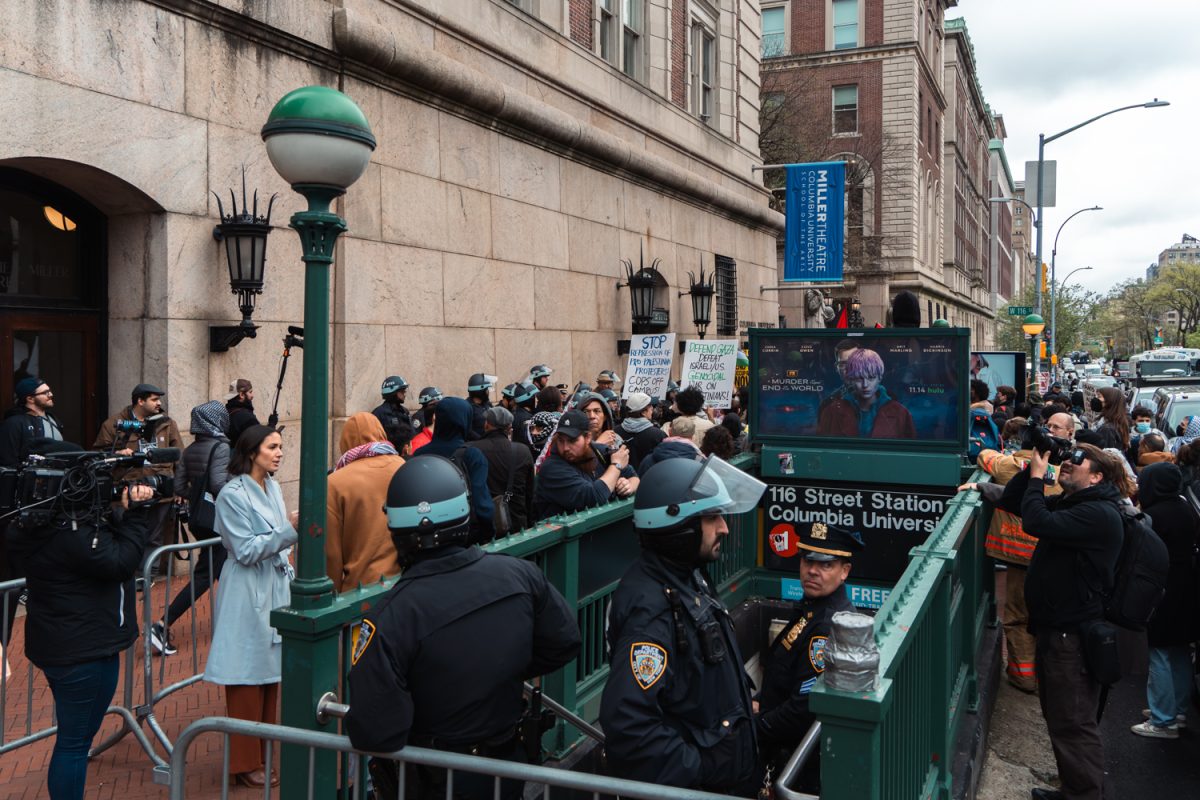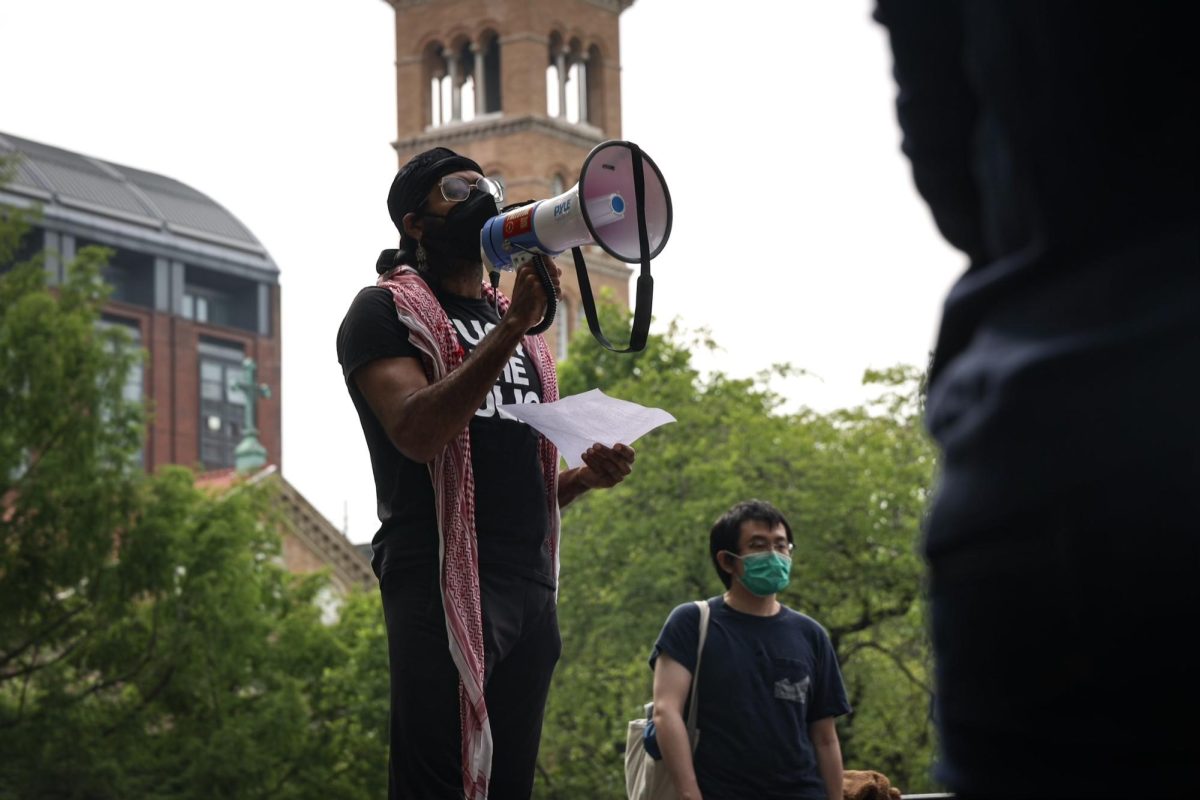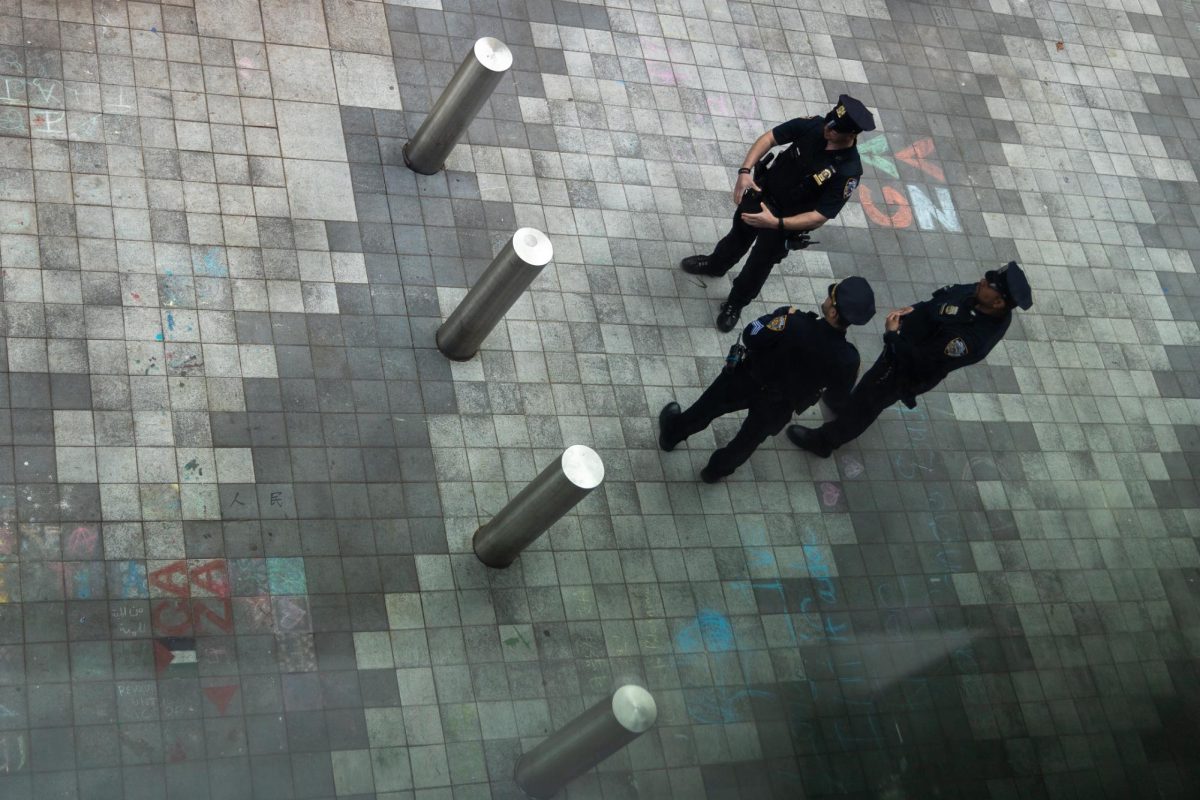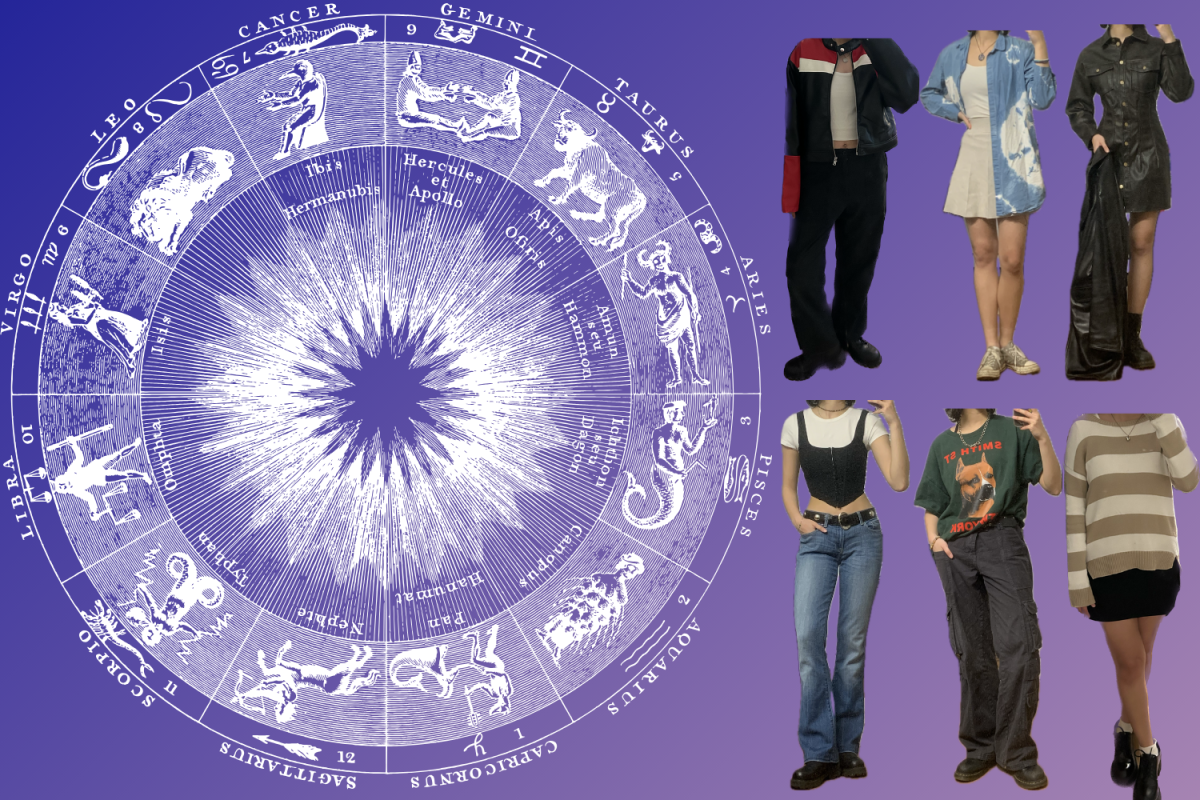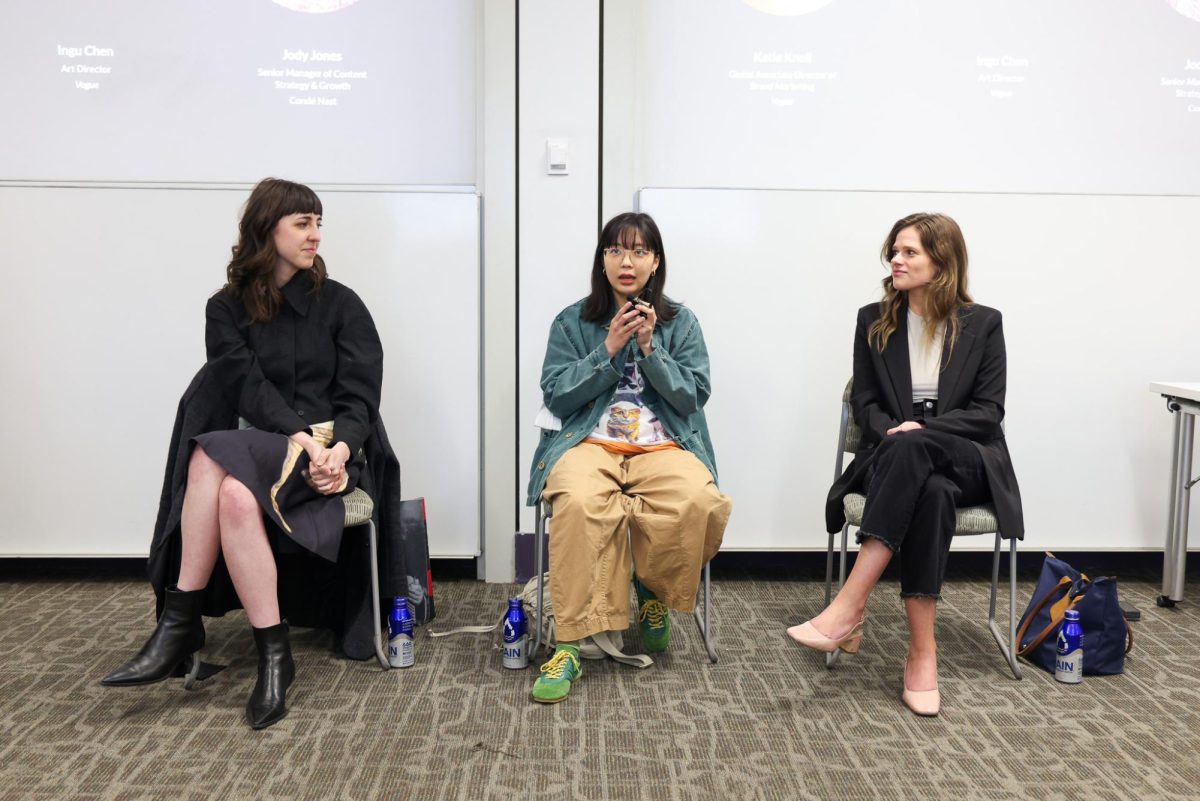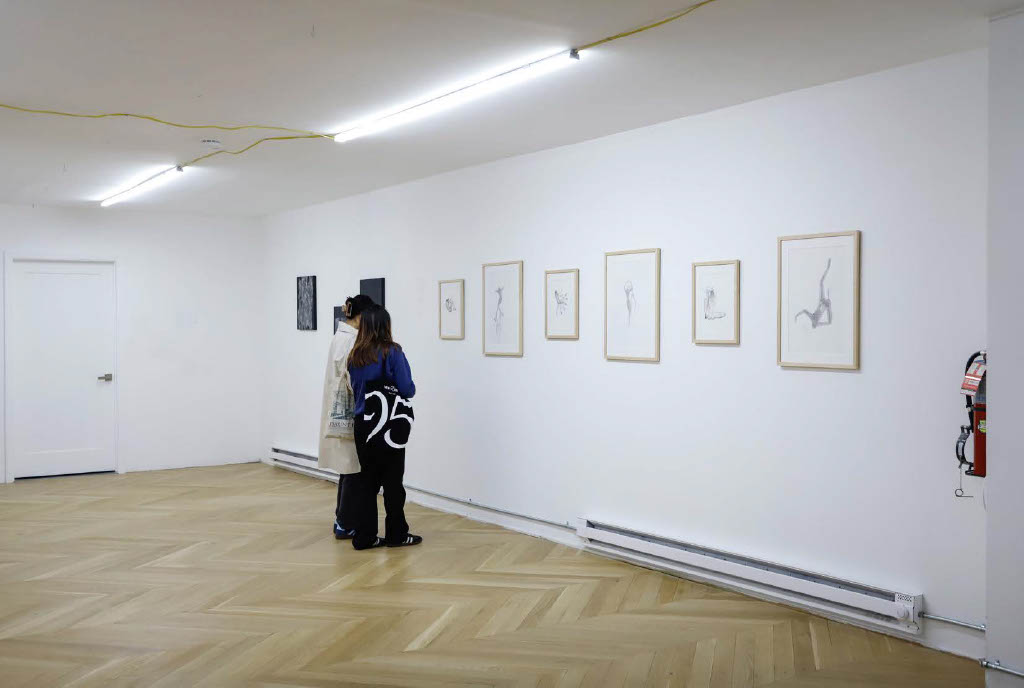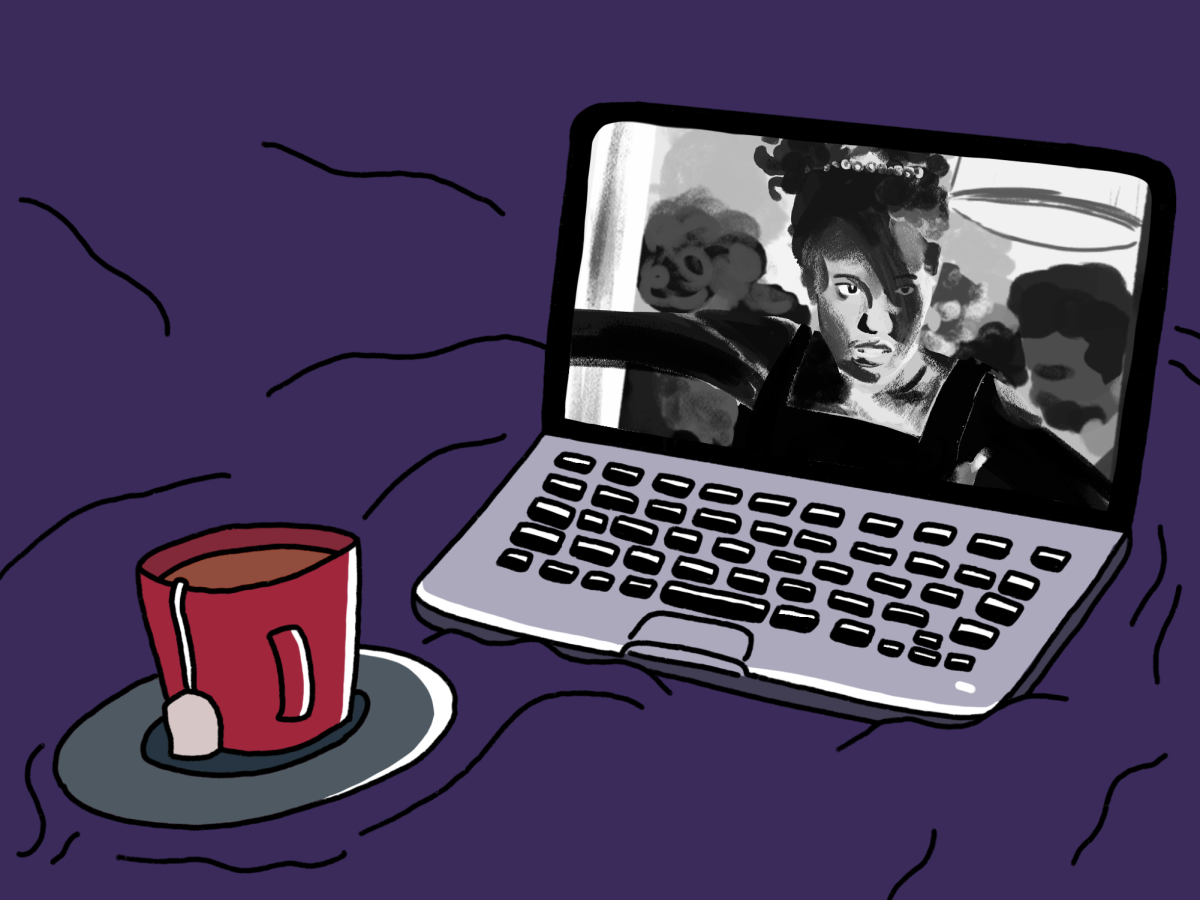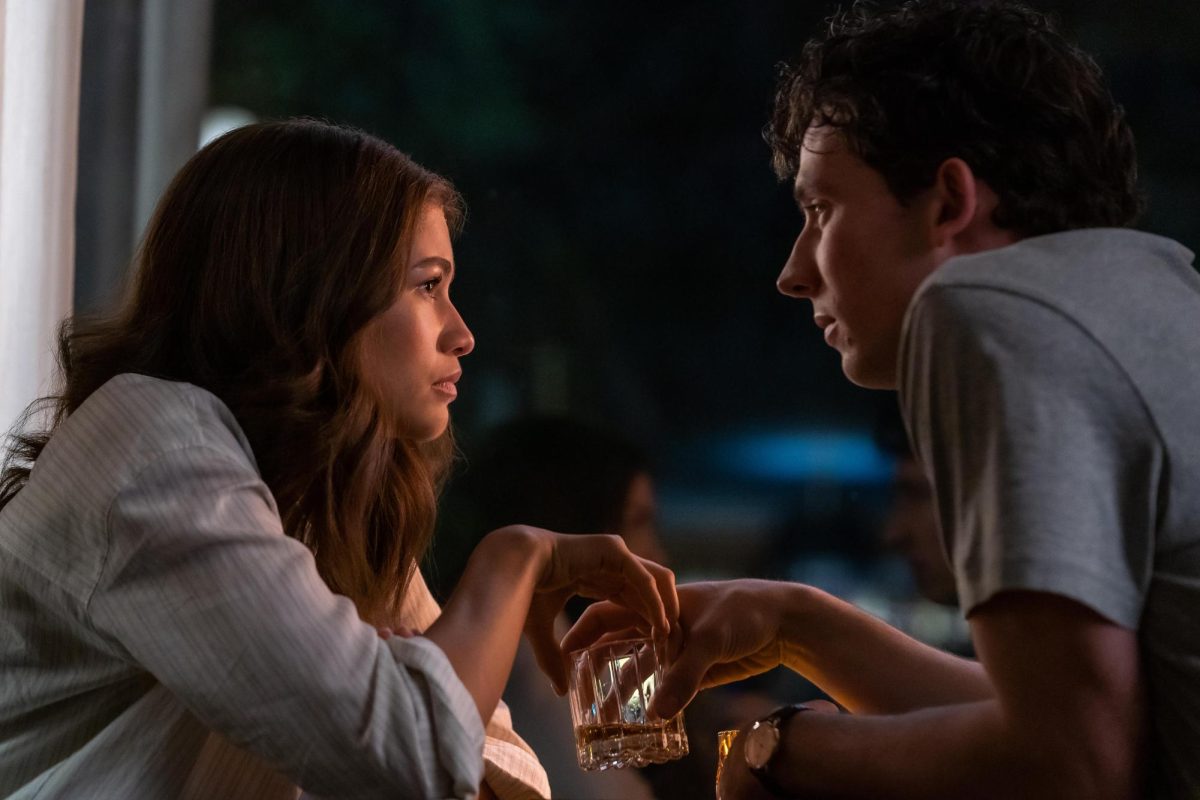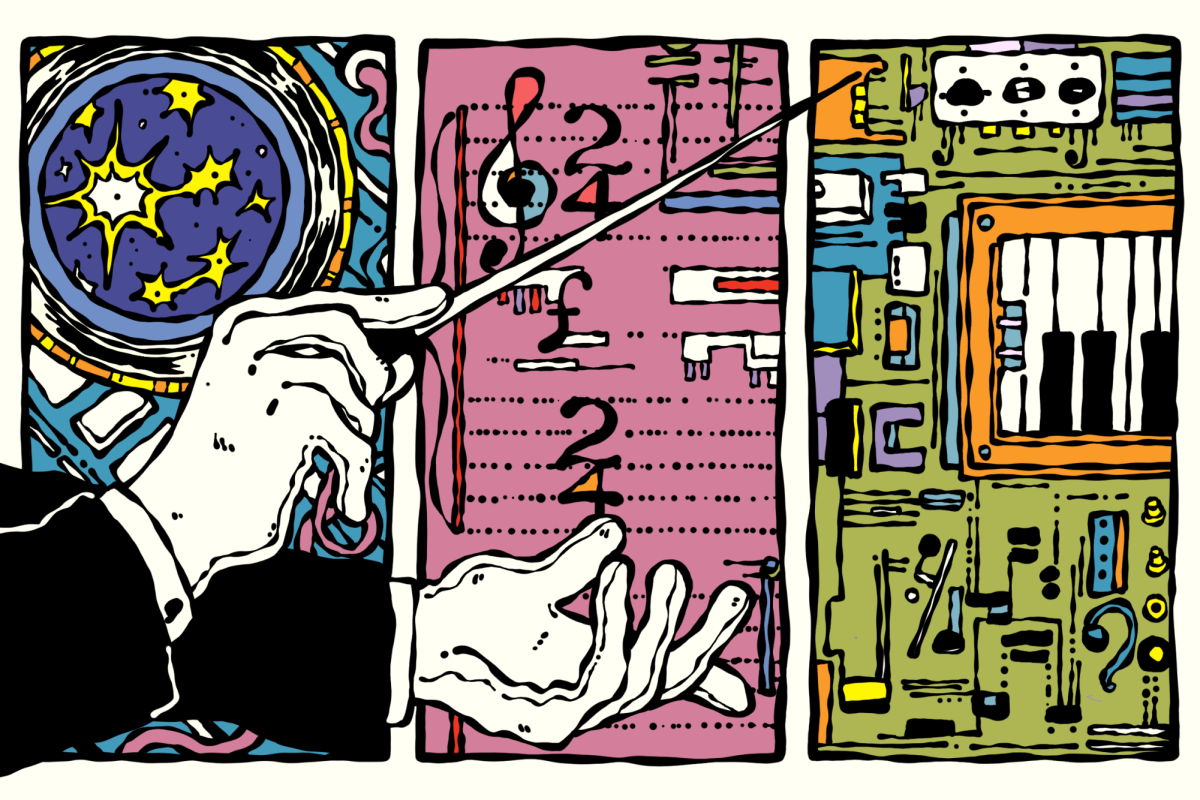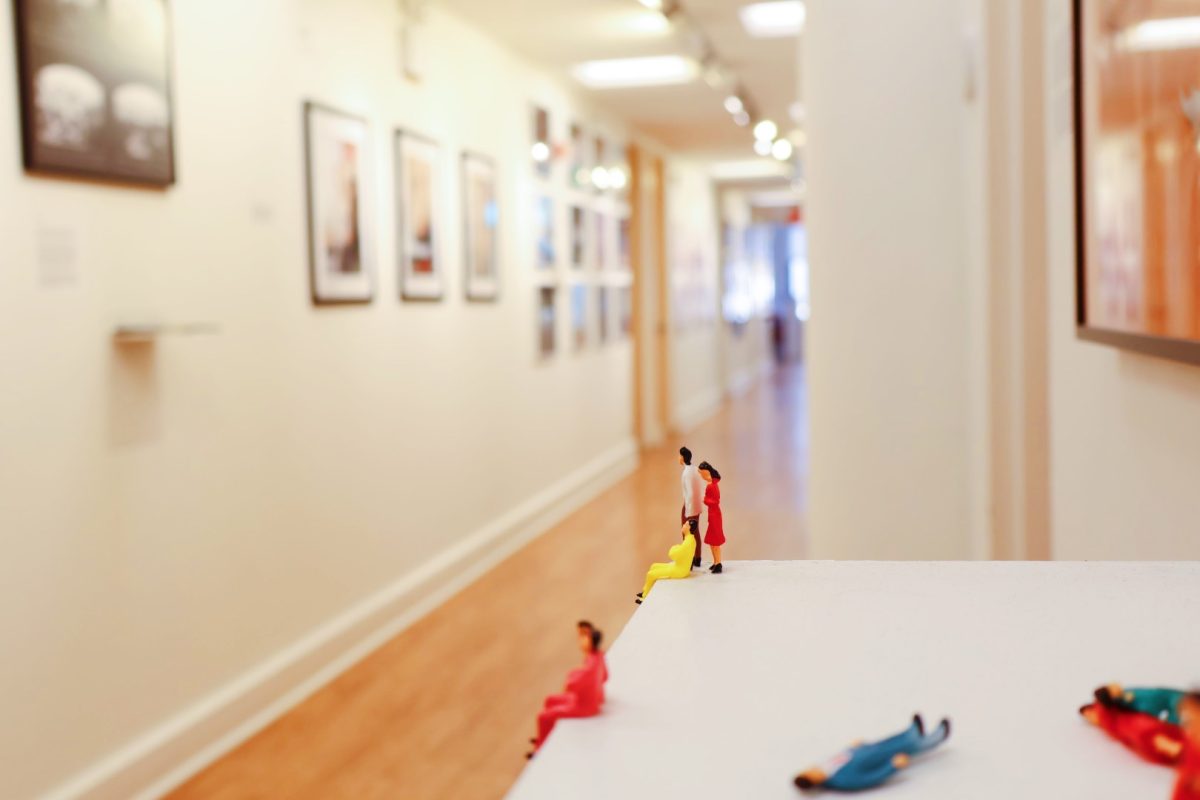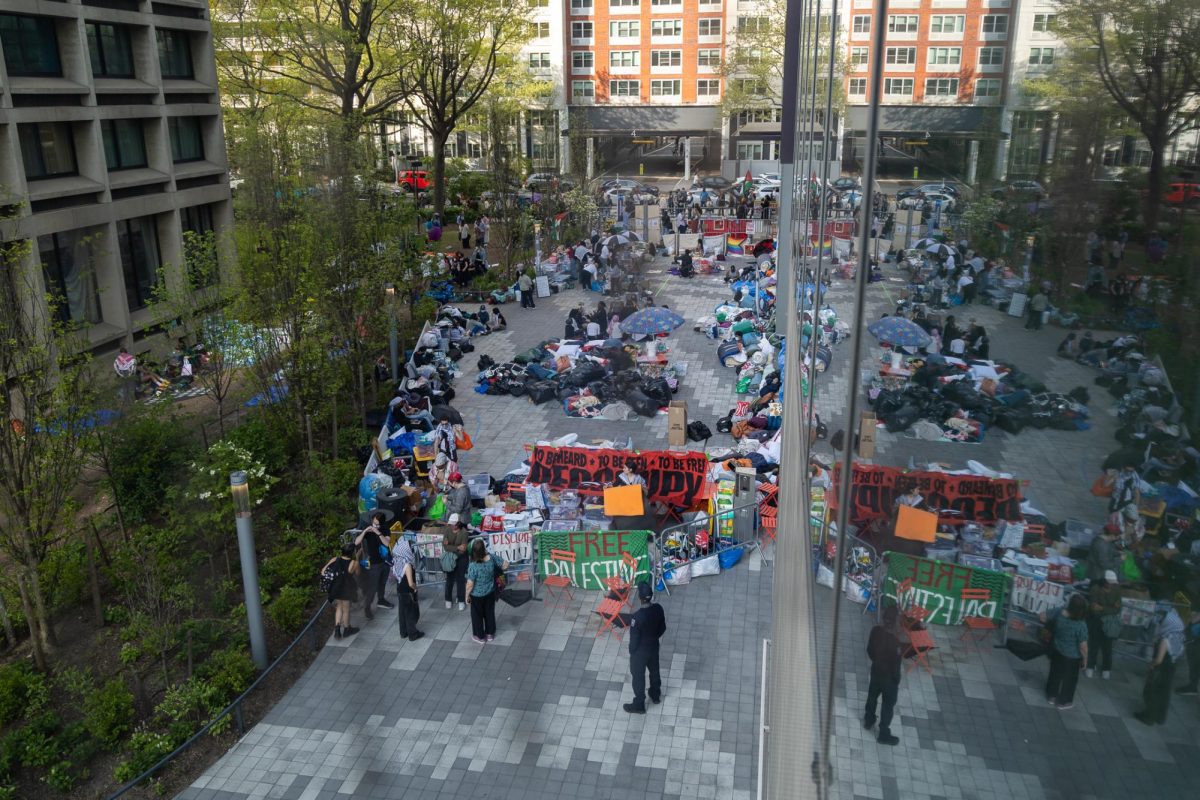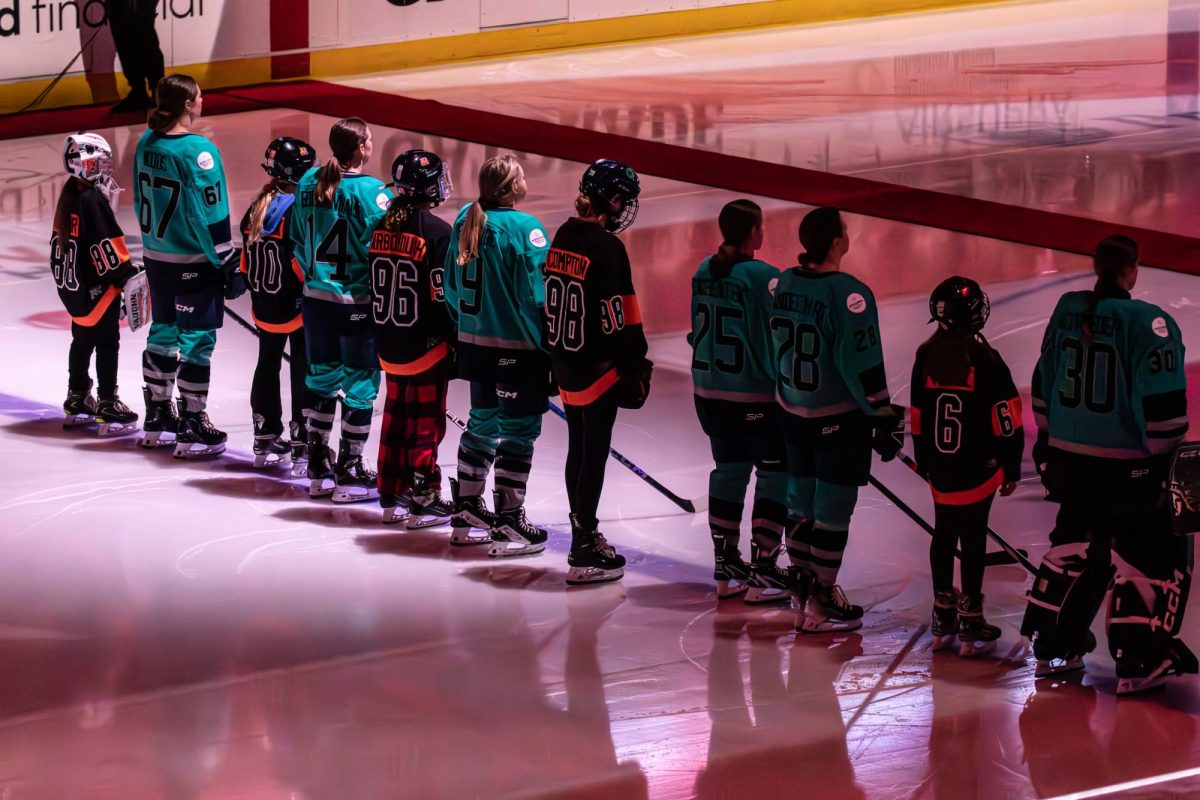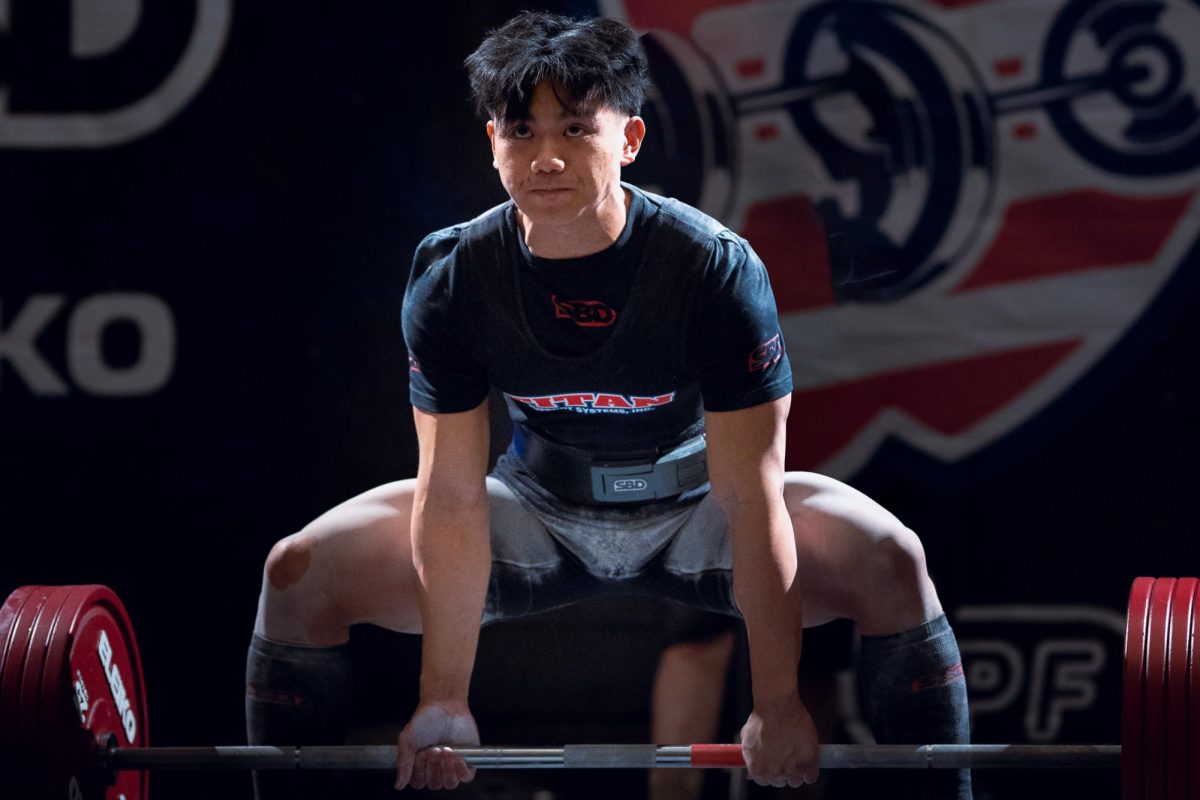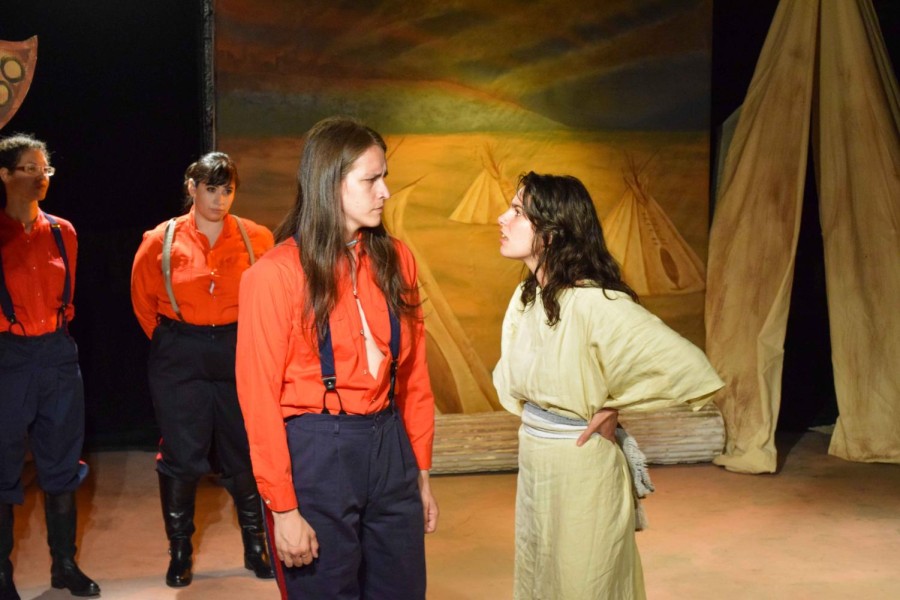Review: ‘The Trojan Women’ is a Native American Greek tragedy
AMERINDA’s adaptation of Euripides’ classic play centers the strength and resilience of Indigenous women in the face of colonization. Performances run until May 15 at Theater for the New City.
Don’t miss “The Trojan Women”, a must-watch show running at the Theater for the New City. (Staff Photo by Sabrina Choudhary)
May 5, 2022
I first saw “The Trojan Women” during a rehearsal in a dance studio at Abrons Arts Center, a few days before opening night. Even without the sets, lighting, music or costumes of the completed staging, the acting was so captivating that I found it hard to believe there was anything left to add. The old-fashioned, stylized monologues that form the bulk of the script sounded impressively natural and were easy to follow. And where words failed, the grief on the women’s faces — especially that of Johnette Janney, who plays Hecuba — said everything else.
“The Trojan Women” is produced by American Indian Artists Inc., known by its abbreviation AMERINDA — New York City’s only organization advocating for Indigenous perspectives in the arts. The play is a retelling of Euripides’ ancient Greek tragedy. The original story is set in the immediate aftermath of the Trojan War and follows the women of the Trojan royal family — Hecuba, Cassandra, Helen, Andromache and their handmaidens — who find themselves subjugated by the Greeks. Sarah B. Denison’s adaptation sets the story in Spokane, Washington, just after it was conquered by European colonizers, loosely based on the battles of 1858.
I was stunned when Denison, who is also directing the show, told me that the actors had only been rehearsing for three weeks.
“It’s a show that really deserves months,” Denison said. “You could spend a year on one of these monologues.”
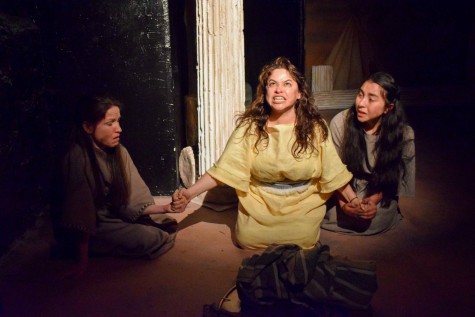
Denison said that casting was a challenge because the small pool of Indigenous actors in New York City means that many people are busy with other projects. The upside is that some of the actors in “The Trojan Women” are making their debuts, and they’re learning from an incredibly talented cast and crew.
“It’s all about creating opportunity for people that otherwise wouldn’t have an opportunity,” Denison said.
The director was initially nervous to tackle this adaptation. She had read the original play as an undergraduate, but it didn’t resonate with her then. When she reread the script with the adaptation in mind, though, the story suddenly felt very personal. She ran with this impression, drawing influences from her own Spokane tribal history and the cultures of others working on the show.
“Using a lot of Spokane stuff but also allowing everybody who’s involved to have some say and some representation from their tribe as well was really important to me,” Denison said. “Because theater’s so collaborative … Especially with AMERINDA, we want a celebration of all of these people from all of these tribes all over the place, living in this city and creating art together.”
Denison was diligent in finding parallels between the original Trojan characters and figures in Spokane history by not just borrowing names, but matching similar personalities and societal roles. For instance, Hector became Slough-Keecha, also known as Spokane Gary, a chief who had a reputation as a peacekeeper. Denison worked hard to insert details like these, because this history isn’t widely known and was difficult to research.
Media specialist Marlene Flores is excited by the adaptation because Native American history is so marginalized. She said that Native perspectives are not generally included in school curricula, so “The Trojan Women” could be educational for anyone.
“It’s never really done before and our history … isn’t really spoken of, and it’s hard to bring to light to certain audiences,” Flores said.
Denison agreed, adding that her friends in New York are often shocked when she shares her perspective as an Indigenous person. She wants “The Trojan Women” to show audiences the other side of colonization, which she had to learn at home rather than in school. Denison hopes that Indigenous viewers take comfort in seeing their side of the story portrayed, and that non-Indigenous viewers begin to see things differently.
“Sure, history is told from one point of view, but what happens if you turn that point of view around?” she said. “There are two sides to every story. Why don’t we tell both sides?”
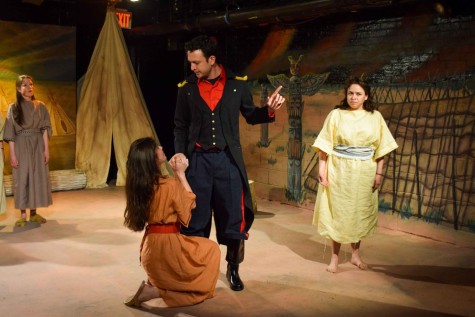
In the original play, the women believe the gods have abandoned them and allowed them to suffer. In her retelling, Denison wanted to shift the culpability from the gods to the invaders directly responsible, and remove what she called the “woe is me” tone from the original script.
“I didn’t want it to be the gods’ fault in this adaptation,” Denison said. “I wanted it to be the colonizers’ fault. I wanted the focus of blame to be where it should have been.”
At the same time, the show is not limited to the past. One by one, the women tell their stories, then go off to meet their fates. Before a character exits for the last time, one of the matriarchs ties a white handkerchief with a red handprint across her mouth — a contemporary symbol of Missing and Murdered Indigenous Women and Girls. Each time this happens, Fawn Wood’s cover of “Remember Me” plays. The character isn’t dying, but the sendoff is clearly a farewell and a form of mourning. I got chills every time.
“The Trojan Women: A Native American Adaptation” does not pull any punches in depicting the European colonization of North America. It is a horrifying, intense 90 minutes, but the story is ultimately a powerful message about Indigenous women’s strength, hope and survival in the face of unspeakable suffering.
“I hope what people walk away with is — just in general — understanding the strength of Indigenous women and the fact that we are still here despite everything, despite being wiped out culturally and genocide,” Denison said. “We fought through that. We’re still here.”
Performances of “The Trojan Women: A Native American Adaptation” run until May 15 at Theater for the New City. General tickets are $18; student and senior tickets are $15.
Contact Sabrina Choudhary at [email protected].



